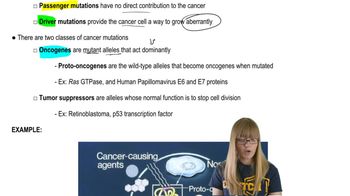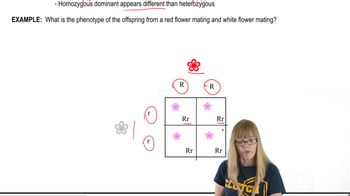Among Betazoids in the world of Star Trek®, the ability to read minds is under the control of a gene called mindreader (abbreviated mr). Most Betazoids can read minds, but rare recessive mutations in the mr gene result in two alternative phenotypes: delayed-receivers and insensitives. Delayed-receivers have some mind-reading ability but perform the task much more slowly than normal Betazoids. Insensitives cannot read minds at all. Betazoid genes do not have introns, so the gene only contains coding DNA. It is 3332 nucleotides in length, and Betazoids use a four-letter genetic code. The following table shows some data from five unrelated mr mutations. Mutation Description of Mutation Phenotype _ mr-1 Nonsense mutation in codon 829 Delayed-receiver mr-2 Missense mutation in codon 52 Delayed-receiver mr-3 Deletion of nucleotides 83–150 Delayed-receiver mr-4 Missense mutation in codon 192 Insensitive mr-5 Deletion of nucleotides 83–93 Insensitive For each mutation, provide a plausible explanation for why it gives rise to its associated phenotype and not to the other phenotype. For example, hypothesize why the mr-1 nonsense mutation in codon 829 gives rise to the milder delayed-receiver phenotype rather than the more severe insensitive phenotype. Then repeat this type of analysis for the other mutations. (More than one explanation is possible, so be creative within plausible bounds!)

Verified Solution
Key Concepts
Gene Mutations

Phenotype Expression

Recessive vs. Dominant Traits

Shown here are the amino acid sequences of the wild-type and three mutant forms of a short protein.
___________________________________________________
Wild-type: Met-Trp-Tyr-Arg-Gly-Ser-Pro-Thr
Mutant 1: Met-Trp
Mutant 2: Met-Trp-His-Arg-Gly-Ser-Pro-Thr
Mutant 3: Met-Cys-Ile-Val-Val-Val-Gln-His _
Use this information to answer the following questions:
Using the genetic coding dictionary, predict the type of mutation that led to each altered protein.
Shown below are two homologous lengths of the alpha and beta chains of human hemoglobin. Consult a genetic code dictionary (Figure 13.7), and determine how many amino acid substitutions may have occurred as a result of a single nucleotide substitution. For any that cannot occur as a result of a single change, determine the minimal mutational distance.
Alpha: ala val ala his val asp asp met pro
Beta: gly leu ala his leu asp asn leu lys
